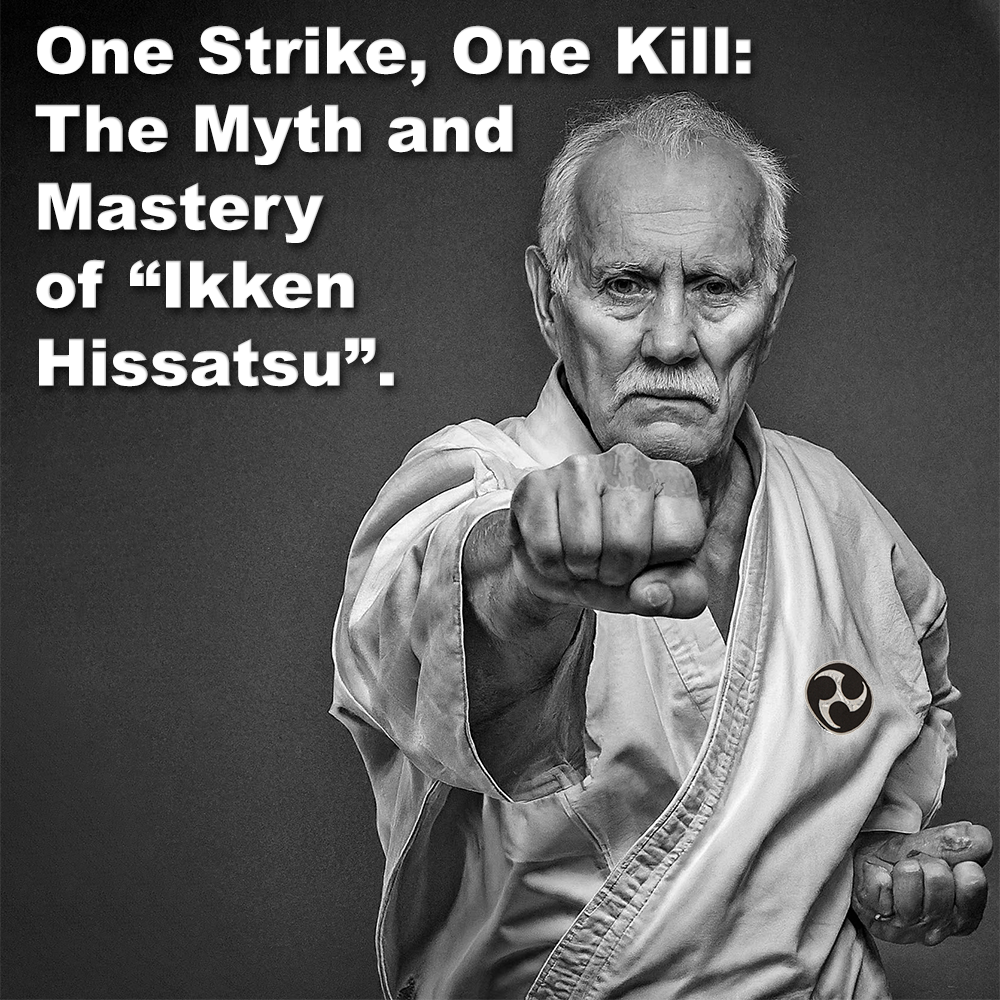
(2 minutes 21 second read)
“Ikken hissatsu” (一拳必殺) – What does this maxim mean to you? How do you interpret it?
.
A Japanese term frequently encountered in the context of karate, carrying the weighty meaning of “to kill with one blow” or more literally, “one fist, certain death.”.
.
To interpret “ikken hissatsu” as solely the ability to deliver fatal strikes with each blow is overly literal and impractical.
.
While it’s true that a single strike could potentially be lethal, to expect every practitioner to possess such a capability at all times is unrealistic, especially in the chaotic and unpredictable nature of real combat.
.
Recently a 2nd dan we know was complaining about a senior instructor, stating that he didn’t like his ‘Ikken hissatsu’; one punch, one kill, way of thinking. “Good luck with that one.” – he stated.
.
He has obviously misinterpreted the maxim, and it’s not surprising, as this phrase is one of the many misunderstood concepts in karate.
.
It does not imply delivering blows with the intent to kill, with one blow.
.
Rather, the interpretation is that with each blow, if necessary more than one, dealt with full commitment, you have the intention of ending the fight. If you’re going to strike, you make it count.
.
I think “certain death” is taken too literally, and creates an impractical expectation of skills. The statement by the 2nd dan was obviously too literal about the senior instructors methods.
.
Perhaps the maxim has its origins in Kenjutsu, the wielding of a razor-sharp sword, where every slash or thrust that could potentially result in death.
.
However, a further idea is that “One fist one kill” derived from “Issha zetsu mei” (One shot one life) from Kyodo (Japanese archery). Again this concept does not mean that each arrow must take a life.
.
“Issha zetsu mei” being one of the most important concepts in Kyudo. It means you have to unite the shot with your Spirit (Kokoro, 心) and body – give everything to it, to shoot every arrow as if it were your last.
.
With either definition, the concept of every slash, stab, cut, or arrow fired, could kill the enemy, just isn’t practical, or even plausible, to think that every strike will kill.
.
However, through the interpretation and analysis of our kata, we discover the founders of karate on Okinawa must have had a similar mindset, that is, to end a confrontation as quickly and efficiently as possible, to allow escape.
.
The concept of dispatching an opponent quickly was definitely desirable. Did this mean that every strike made had the intention of being able to kill an opponent? No, of course not. The idea was to make the opponent unable to continue their attack.
.
I think that this leads us to believe that “ikken hissatsu” should be understood as a guiding principle, emphasizing intent and focus, rather than an intent to kill with one blow.
.
This principle demands that practitioners tackle each facet of their training with commitment and persistence, aiming to achieve peak efficiency in every technique.
.
It entails pouring your entire effort and devotion into each training session, showing dedication, not to the notion of being able to kill with one strike, but rather a pledge to excel in the martial arts through unwavering commitment and the pursuit of proficiency….. perhaps even a maxim for life too.
.
.
